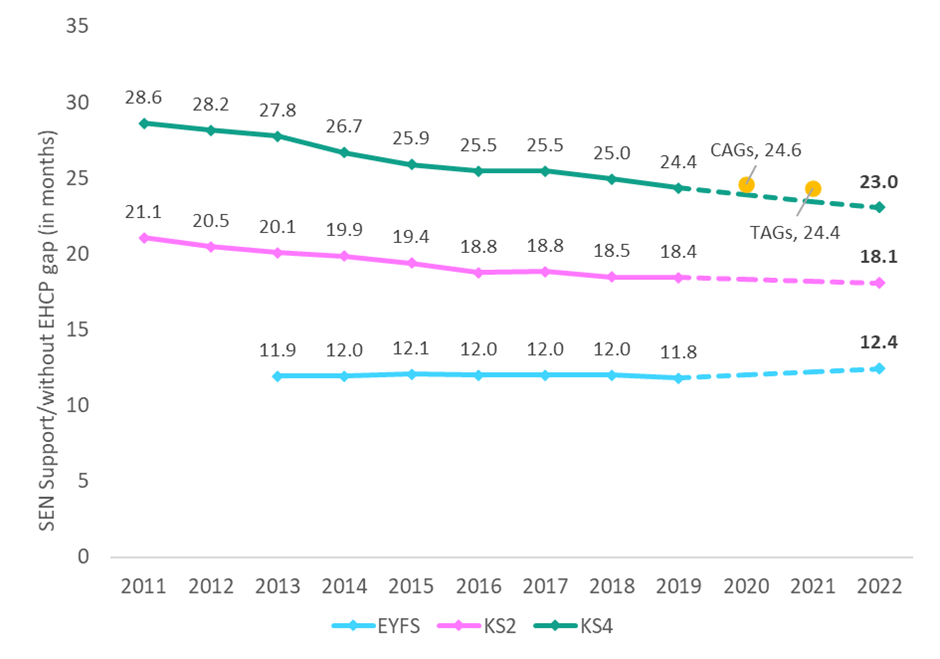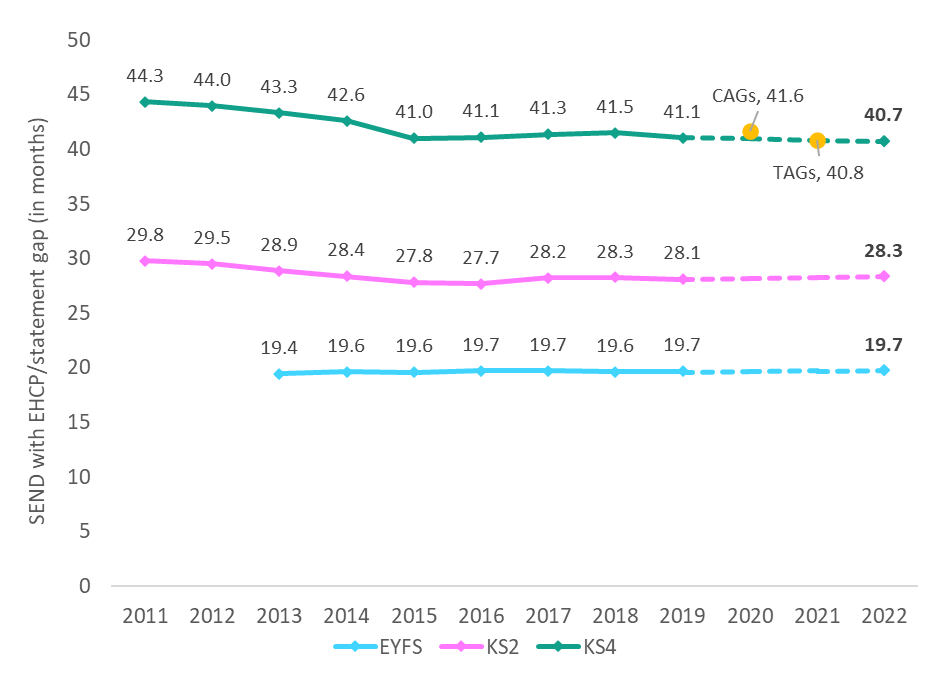Special Educational Needs and Disability
Pupils with special educational needs and disabilities (SEND) are some of the most educationally disadvantaged in the English state school system. Our previous research has found that four in ten children will be identified as SEND at some point between the ages of 5 and 16. In our analysis we distinguish between pupils who receive support in school (SEN support) and those with more complex needs set out in an education, health and care plan (EHCP), and we compare both groups to their peers with no identified needs.
SEN Support
By the end of reception year, children receiving SEN Support were over a year behind their peers with no identified SEN in 2022, highlighting that there are already sizeable gaps for pupils with additional needs on starting school. This gap grows to 18 months by the end of primary school and to almost two years by the end of secondary school.
The gap for children in reception receiving SEN Support in 2022 widened over the course of the pandemic to reach its highest level (12.4 months) since the start of the series in 2013. By contrast, the SEN Support gap at the end of key stage 2 narrowed between 2019 and 2022 (to 18.1 months in 2022), continuing its long-term downward trend since 2011 (when it was three months higher, at 21.1 months).
The SEN Support gap at the end of key stage 4 also narrowed during both the pre- and post-pandemic periods, reducing by almost six months since 2011 to 23.0 months in 2022. However, for both key stages 2 and 4, progress in closing the gap has slowed since 2016.
Figure S1: Children receiving SEN Support are over a year behind their peers in reception year and this gap grows to 18 months by the end of primary school and reaches almost 2 years by the end of secondary
Education Health and Care Plans
Attainment gaps are wider still for pupils with more complex needs. For children in reception year with an EHCP, the gap in 2022 was 19.7 months – a level largely unchanged since 2014.
Meanwhile the EHCP gap for pupils at the end of primary school was 28.3 months in 2022, slightly higher than its pre-pandemic level in 2019 (28.1 months) but still a smaller gap than at the start of the series in 2011 (at 29.8 months).
By the end of secondary school, the EHCP gap was even wider at almost three and a half years (40.7 months) in 2022. But in contrast to earlier phases, this is a smaller gap than prior to the pandemic (at 41.1 months in 2019) and sustains its long-term downward trend, albeit at a slower rate of progress than during the earlier period 2011-2015.
Figure S2: The EHCP gap has remained largely unchanged for pupils in reception year in 2022 compared to 2014, but at both key stages 2 and 4 the EHCP gap has narrowed over the period 2011-2022, albeit at a slower rate of progress since 2015


